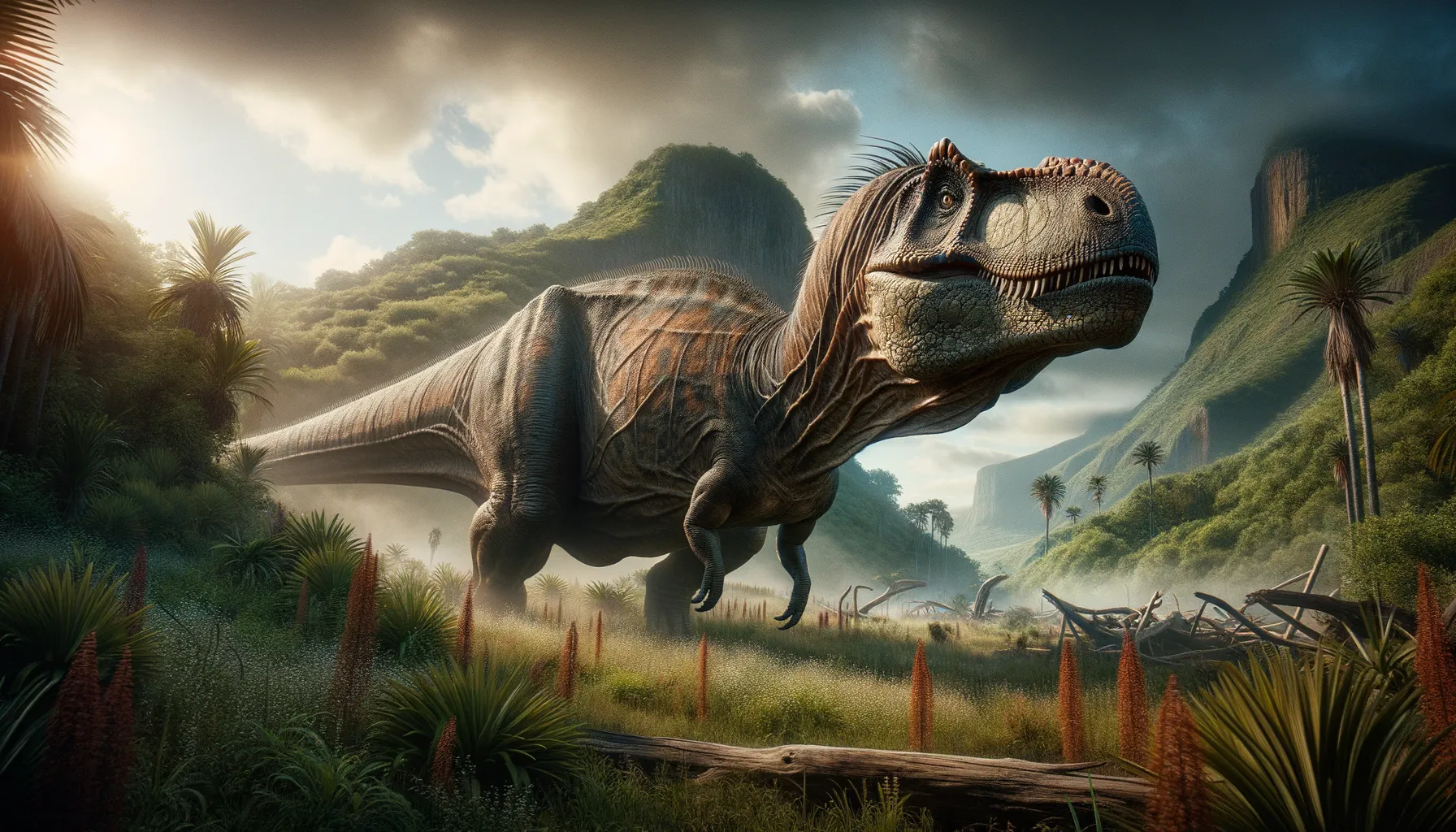
Tapinocephalus
The gentle giant of the Permian plains.
Period
Permian
Length
Up to 6 meters long.
Height
Around 2.5 meters tall at the shoulder.
Weight
Approximately 2,000 to 4,000 kg.
Tapinocephalus was a large herbivorous therapsid from the Permian period. Known for its massive size and thick skull, it roamed ancient South Africa before the rise of dinosaurs. The genus is part of a group called the dinocephalians, which were among the dominant land animals of their time. Despite its imposing appearance, it was a plant-eater, using its bulk to move through dense vegetation.
Diet
Tapinocephalus was herbivorous, feeding mainly on prehistoric ferns and cycads. Its large body and strong jaw muscles were ideal for breaking down tough plant material.
Hunting
As a plant-eater, Tapinocephalus did not hunt but foraged for vegetation. Its massive size likely protected it from many predators, reducing the need for active defense mechanisms.
Environmental challenges
Living during the Permian period, Tapinocephalus faced fluctuating climates and environments. As the climate shifted, vegetation types changed, demanding dietary adaptability. The large size was advantageous, helping resist periods of food scarcity caused by environmental changes.
Speed
Slow-moving due to its massive body.
Lifespan
Likely a few decades, similar to large mammals.
First discovery
First discovered in South Africa in the early 20th century.
Fun Facts
- Tapinocephalus lived during the middle Permian period, which was over 260 million years ago, long before dinosaurs roamed the Earth.
- This creature was part of a group known as therapsids, which are ancient relatives of mammals.
- Tapinocephalus was a large herbivore, likely using its massive body to knock down vegetation to feed.
- They had thick skulls, which some scientists believe may have been used in head-butting contests or to show off to other Tapinocephalus.
- Despite their size, they were not fast movers and relied more on their sheer bulk as protection against predators.
- Fossils of Tapinocephalus have been mainly found in what is now South Africa, which was part of the supercontinent Gondwana at the time.
- The name 'Tapinocephalus' means 'low head,' referring to its low, broad skull shape.
Growth and Development
Tapinocephalus likely experienced rapid early growth to attain its large size, crucial for survival against predators of the time. Juveniles would have grown relatively quickly to reach a size where they were less vulnerable. Growth rings in fossil bones suggest a seasonal growth pattern, potentially mirroring periods of abundance and scarcity in its environment.
Habitat
It inhabited semi-arid regions with rivers and lush landscapes, common to the ancient southern continents. Fossil evidence indicates a preference for areas abundant with plant life, allowing for sustained feeding. Its environment was shared with other large plant and meat-eaters, indicating a diverse ecosystem.
Interaction with other species
Interactions were likely competitive, with large herbivores vying for the same food sources. Carnivorous species posed a threat, though Tapinocephalus's size offered defense against smaller predators. It coexisted with numerous species, contributing to a biodiversity-rich ecosystem.
Natural lifespan
Natural lifespan estimates range from 20 to 30 years.
Reproduction
Reproductive habits are inferred from modern analogs, suggesting internal fertilization and egg-laying. The young might have been nurtured in communal nesting sites, promoting higher survival rates. Fossil sites don't show direct evidence of breeding practices but imply a structured social system.
Social behaviour
Tapinocephalus might have lived in herds, offering safety in numbers. Such groups would move together, navigating to food and water sources. Social interactions may have included head-butting or shoving, typical of similar animals competing for mates or resources.
Fossil locations
Fossils have primarily been discovered in South Africa, yielding significant insights into its life and environment. These sites provide a wealth of knowledge about the diversity of life during the Permian. Further discoveries continue to shape our understanding of this intriguing species.
